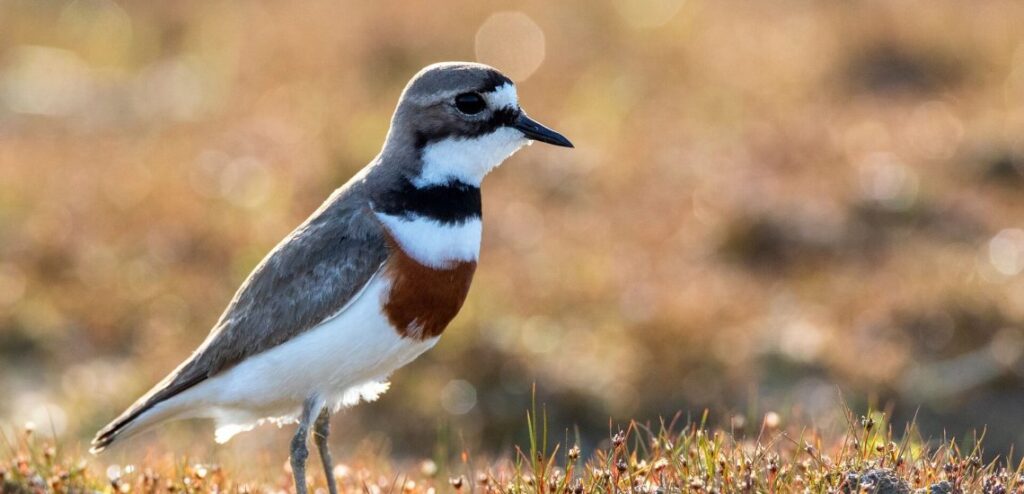Double trouble for the Double-banded Plover

A south Pacific shorebird with a very unusual migration pattern, the Double-banded Plover faces different threats whichever route it chooses.
By BirdLife International
The Double-banded Plover Charadrius bicinctus, which was uplisted from Least Concern to Near Threatened in this year’s Red List update, is one of the more unusual migratory shorebirds of the south Pacific. Instead of migrating to Australia for their summer, flying south each year from breeding grounds in the Northern Hemisphere, it is unique in that it breeds in New Zealand during the southern summer and then flies west across the Tasman Sea to visit Australian shores in the autumn and winter months.
At least, part of the population does that – those birds that breed in the upland rivers of New Zealand’s South Island – while those that breed elsewhere in the Shaky Isles make local movements, and do not cross the Tasman.
Like most shorebirds, Double-banded Plovers nest on the ground, laying their eggs in a scrape in the sand on coastal beaches or, further inland, among pebbles on shingle banks in braided streams. Birds which breed in either habitat each face their own set of threats. Those plovers which nest on coastal beaches face the threats faced by so many beach-nesting birds, with disturbance near the top of the list. Incubating birds are readily disturbed by beachgoers or their dogs walking too close by; the eggs are often inadvertently crushed by being stepped on or run over by recreational vehicles, and even if they’re not crushed, the eggs or chicks may be left unattended for too long, and left to the mercy of the elements or predators, such as gulls and domestic cats.
Upland-nesting plovers are subject to lower levels of disturbance, but experience more predation, mainly from introduced mammalian predators, including hedgehogs, stoats and cats. In addition, their breeding areas may become overgrown with invasive weeds, such as marram grass on beaches and lupins on river banks, making these sites unsuitable for breeding.
The bird is a target species in the Australian Migratory Shorebird Action Plan, which promotes the protection of wetland habitats.
Stay up to date
Sign up to receive the latest bird conservation news. You’ll also receive updates about our projects, science and other ways to get involved including fundraising.
Thank you for your support, we are committed to protecting your personal information and privacy. For more information on how we use your data, please see our Privacy Policy. You can unsubscribe from emails at any time by using the link in the footer of any email from us.

